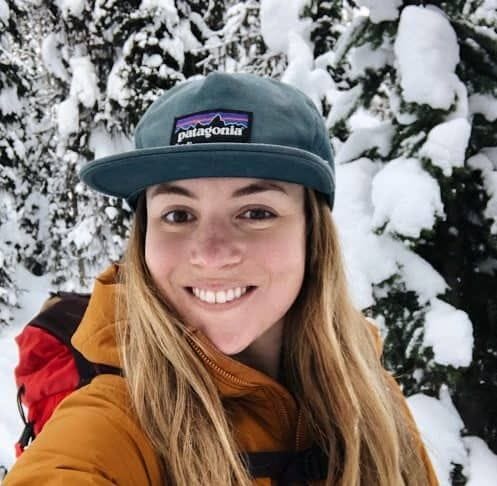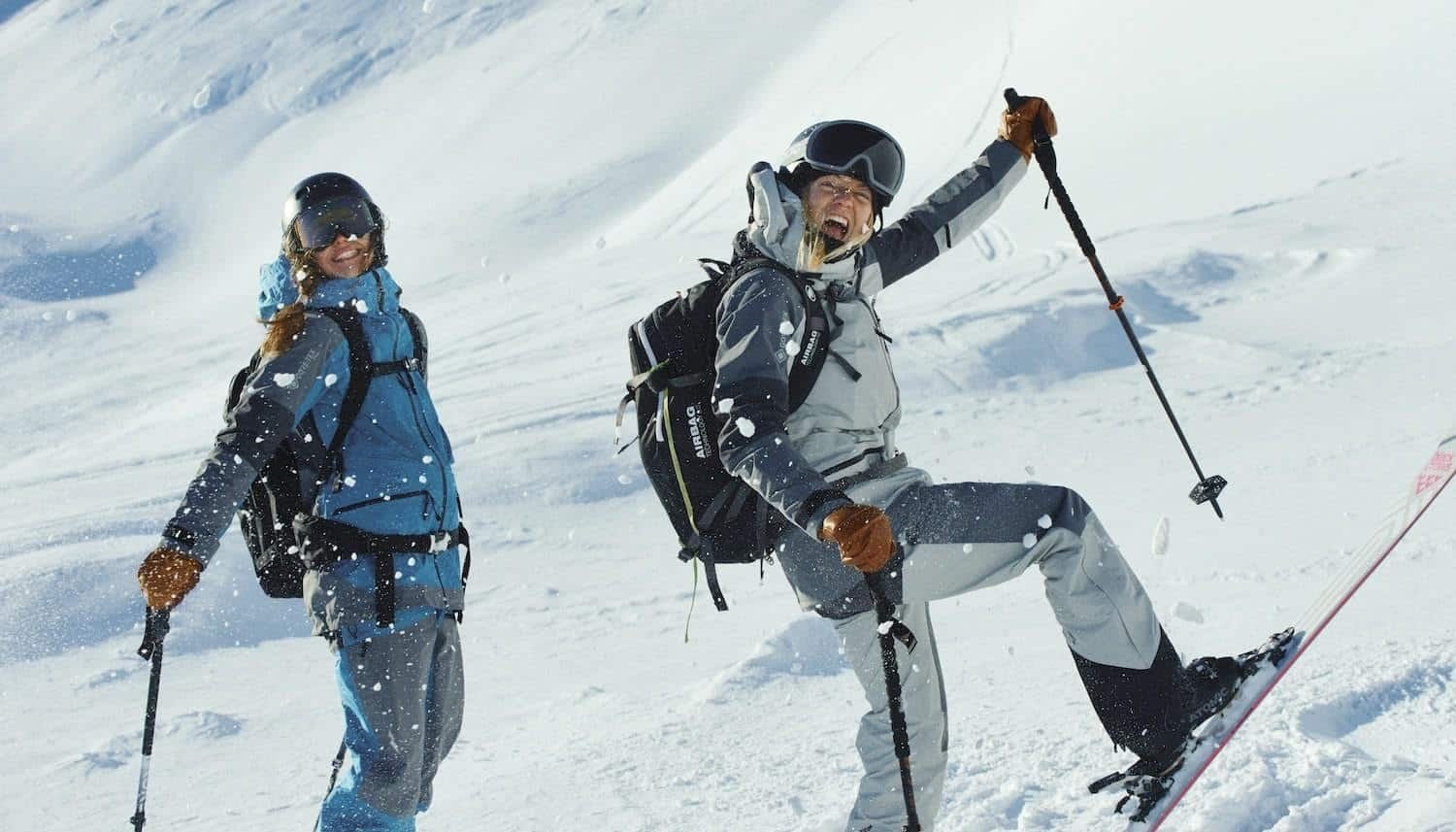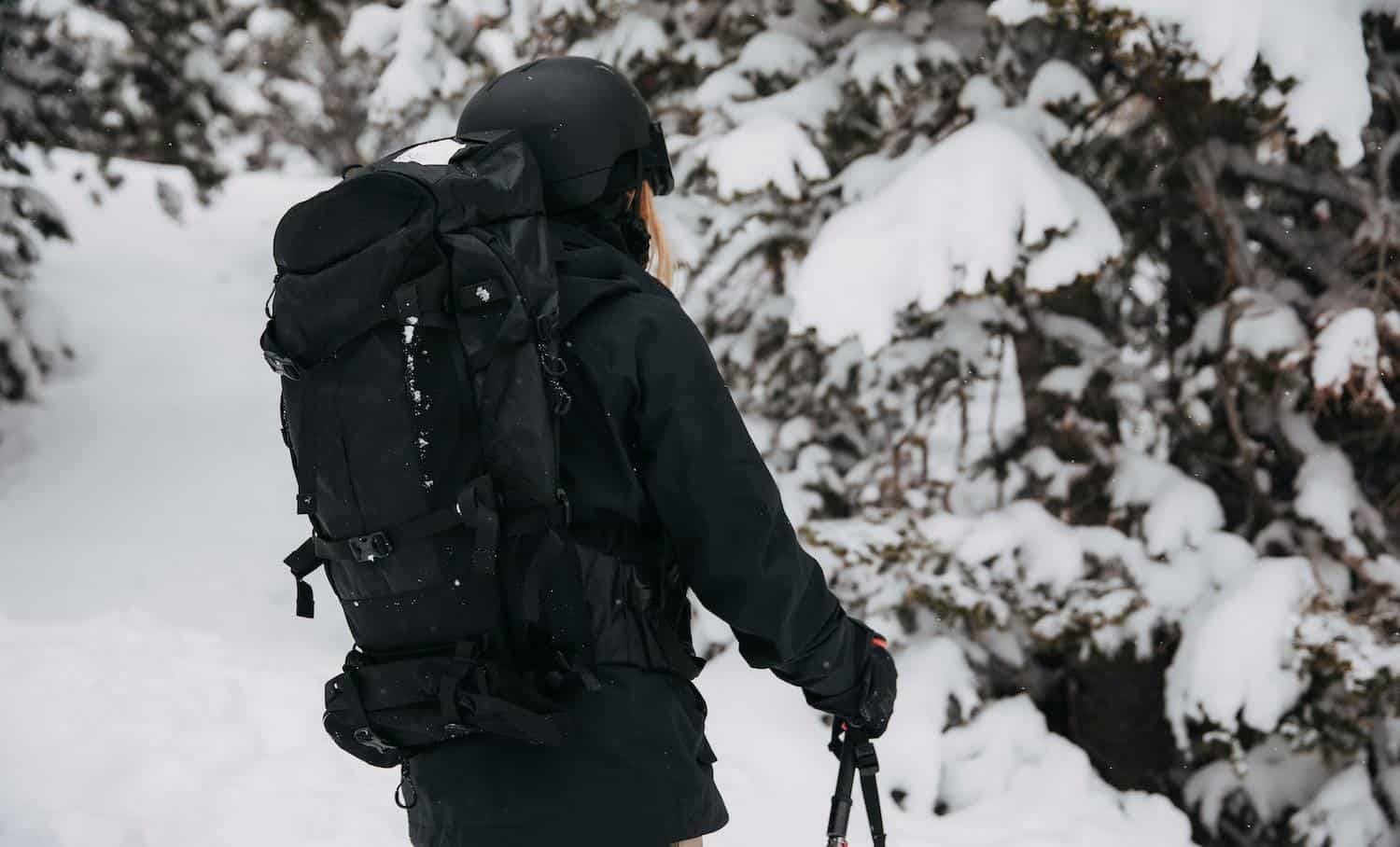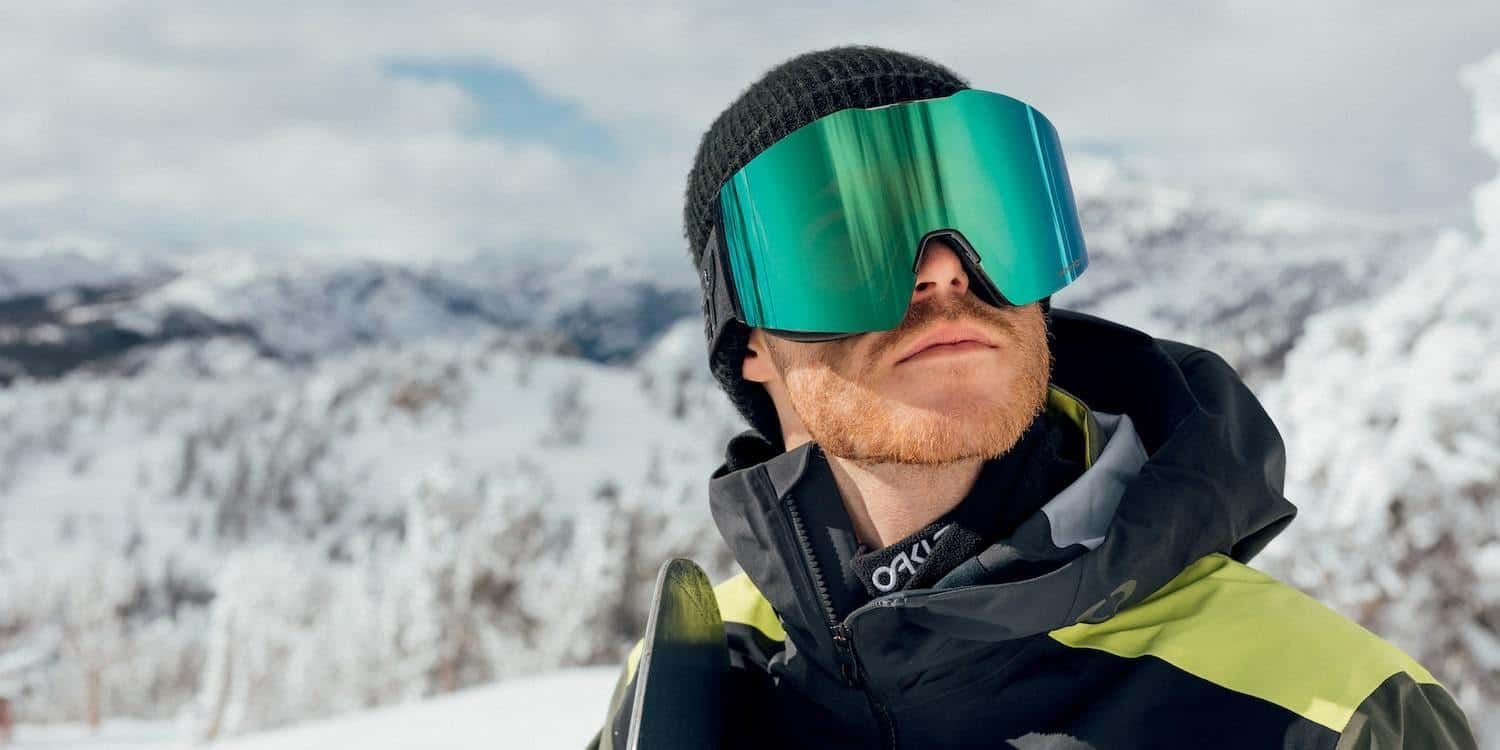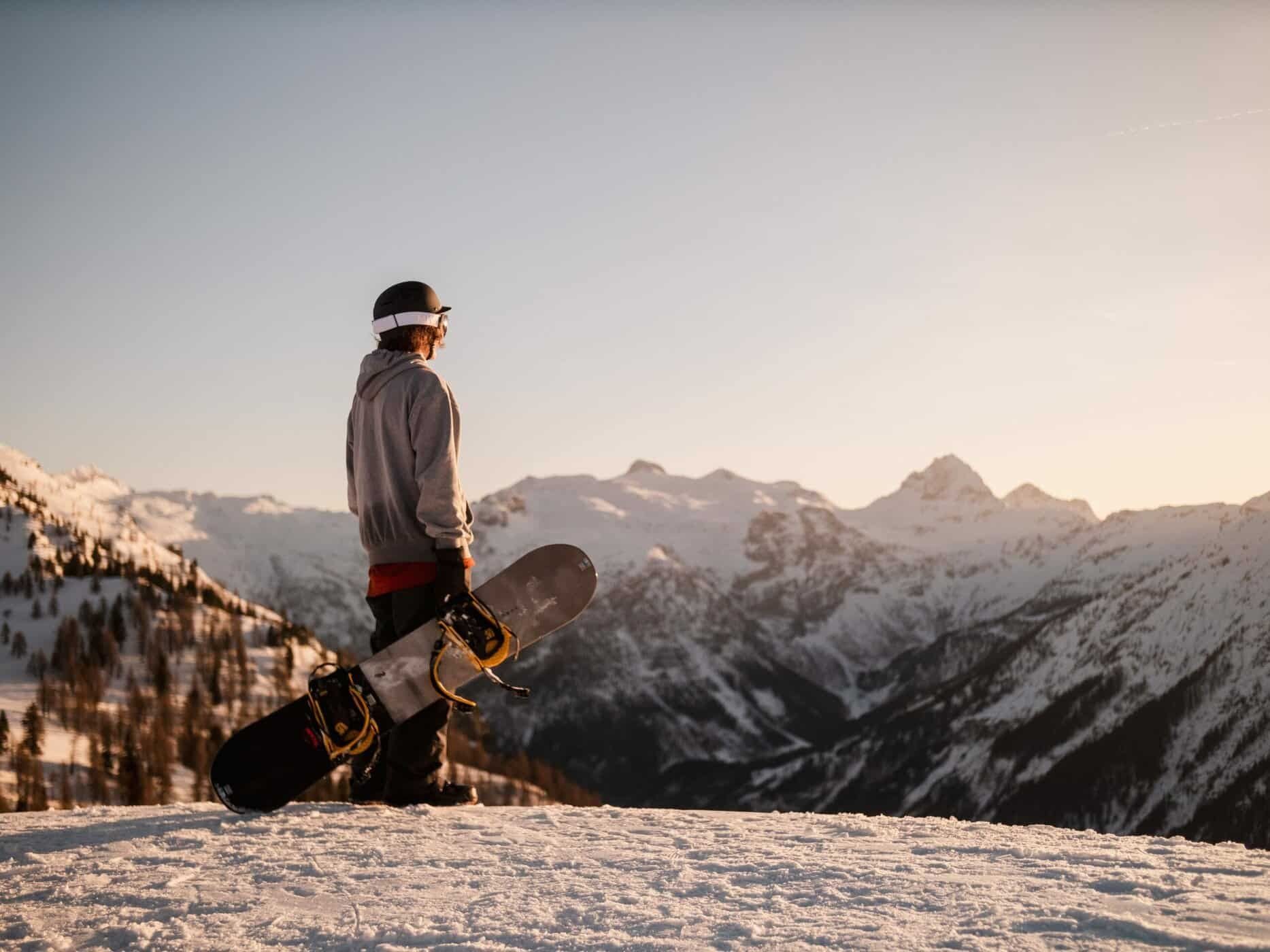Skiing is all about enjoying the slopes, but without the right gear—especially quality ski goggles—it can quickly become a frustrating experience. To keep your vision clear and your time on the mountain fun, we’ve rounded up the best ski goggles for 2025. Whether you’re looking for something budget-friendly, anti-fog, or perfect for low light, there’s a pair on this list to suit your needs.
- Best overall goggles: Anon M4 Cylindrical Goggles
- Best for under $100: Oakley Target Line L Goggles
- Best for cloudy days: Oakley Line Miner L Goggles
- Best for wearing over regular glasses (OTG): Smith Optics I/O Mag XL Snow Goggles
- Best photochromic lens goggles: Salomon Radium Prime Sigma Photochromic Goggles
- Best for night skiing: Oakley Flight Tracker L Goggles
- Best anti-fog goggles: Zeal Optics Lookout Ski Goggles
- Best for kids: Scott Junior Witty Goggles
- Best magnetic lens technology: HEAD Magnify 5K Goggles with Spare Lens
- Best goggles for smaller faces: Smith Optics 4D Mag S Ski Goggles
Best Skiing Goggle Brands
Before diving into the best products, let’s take a look at the top brands shaping the ski goggle industry. These are the leaders known for innovation, quality, and performance on the slopes.
Anon
As a subsidiary of Burton, Anon is known for its advanced lens technology that improves contrast and reduces glare. Their goggles offer exceptional clarity and comfort, making them a top choice for skiers of all levels.
Oakley
A giant in performance eyewear since the 1970s, Oakley transformed the ski goggle market with its lens technology, enhancing colour and visibility in tough conditions. Their sleek designs and superior fit have made them a trusted choice for athletes worldwide. Offer an array of Asian fit options.
Smith Optics
Smith Optics revolutionised snow sports gear with the first sealed thermal lens in 1965. Their focus on anti-fog technology and easy-to-swap lenses ensures their goggles remain a go-to option for both casual and serious skiers.
Salomon
Since 1947, Salomon has been a leader in outdoor gear innovation. Known for durable products and photochromic lenses that adjust to light changes, Salomon’s goggles blend comfort, performance, and advanced design features.
Julbo
Julbo, founded in 1888, started as an eyewear brand for mountaineers. Their expertise in lens clarity and UV protection has made them a top choice for skiers, especially for tough conditions where durability and performance are critical.
Zeal Optics
Based in Boulder, Colorado, Zeal Optics is known for combining eco-friendly materials with high-performance optics. Their goggles, featuring polarised and photochromic lenses, are perfect for outdoor enthusiasts who value both style and sustainability.
Scott
Since 1958, Scott Sports has been a pioneer in ski equipment. Their focus on comfort and ergonomic design, combined with premium optics, makes their goggles ideal for skiers of all ages, from kids to adults.
HEAD
HEAD, a key player in alpine sports since 1950, is renowned for precision and innovation. Their high-quality ski goggles, known for comfort and clarity, are a popular choice for both recreational and professional skiers.
1. best overall goggles
As Anon's signature product, the M4 Cylindrical Goggles provide the hottest look and the most essential ski goggles traits. They’re compatible with prescription glasses (OTG), have a wide field of view, total UV protection, and come with a spare lens. Full venting, quick change lenses, triple foam padding… we could easily go on. But at this price, and with these features, the M4 Cylindrical Goggles are unbeatable.
Price: 0.00$
Brand Name | Product Type
- Lorem ipsum dolor<\/li>
- Lorem ipsum dolor<\/li>
- Lorem ipsum dolor<\/li><\/ul>","_id":"8a82956"},{"feature":"
- Lorem ipsum dolor<\/li>
- Lorem ipsum dolor<\/li>
- Lorem ipsum dolor<\/li><\/ul>","_id":"b7c8538"}],"single_product_id":"","cta_1_url":{"url":"https:\/\/www.altitude-sports.com\/products\/anon-mens-m4-cylindrical-goggle-sonar-blue-spare-lens-llll-ann-203541","is_external":"on","nofollow":"","custom_attributes":""},"cta_2_url":{"url":"https:\/\/www.altitude-sports.com\/collections\/anon","is_external":"on","nofollow":"","custom_attributes":""},"credit":null,"limit":null,"collection_link":null}
2. best goggles under $100
Simple is best as they say, and Oakley is one of the best around—if not the best. Their Target Line L Goggles max your peripheral vision and integrate seamlessly with most helmets. Streamlined to fit comfortably on your face and over your glasses, with anti-fog properties, these may very well be the best budget ski goggles around.
Price: 0.00$
Brand Name | Product Type
- Lorem ipsum dolor<\/li>
- Lorem ipsum dolor<\/li>
- Lorem ipsum dolor<\/li><\/ul>","_id":"b3e2b01"},{"feature":"
- Lorem ipsum dolor<\/li>
- Lorem ipsum dolor<\/li>
- Lorem ipsum dolor<\/li><\/ul>","_id":"beff2b3"}],"single_product_id":"","cta_1_url":{"url":"https:\/\/www.altitude-sports.com\/products\/oakley-target-line-l-googles-matte-black-dark-grey-lens-llll-oak-targetlinel","is_external":"on","nofollow":"","custom_attributes":""},"cta_2_url":{"url":"https:\/\/www.altitude-sports.com\/collections\/oakley","is_external":"on","nofollow":"","custom_attributes":""},"credit":null,"limit":null,"collection_link":null}
3. best cloudy day goggles
In flat light—when the cloud cover flattens everything in front of you—nothing pops shapes like rose gold lenses. Oakley's Prizm lenses are industry leaders, and the Prizm Rose Gold lenses on the Line Miner L Goggles are no different. They effortlessly accent colours and bring out contrasts. Plus these bad boys are interchangeable. Goodbye flat light!
Price: 0.00$
Brand Name | Product Type
- Lorem ipsum dolor<\/li>
- Lorem ipsum dolor<\/li>
- Lorem ipsum dolor<\/li><\/ul>","_id":"3307177"},{"feature":"
- Lorem ipsum dolor<\/li>
- Lorem ipsum dolor<\/li>
- Lorem ipsum dolor<\/li><\/ul>","_id":"95d386b"}],"single_product_id":"","cta_1_url":{"url":"https:\/\/www.altitude-sports.com\/products\/oakley-line-miner-l-goggles-matte-white-prizm-rose-gold-lens-llll-oak-oo7070-c5","is_external":"on","nofollow":"","custom_attributes":""},"cta_2_url":{"url":"https:\/\/www.altitude-sports.com\/collections\/oakley","is_external":"on","nofollow":"","custom_attributes":""},"credit":null,"limit":null,"collection_link":null}
4. best over-the-glasses (otg) goggles
The Smith Optics I/O Mag XL Snow Goggles offer a perfect fit—delivering top-tier clarity with ChromaPop lens tech that enhances contrast. The spherical Carbonic-x lens ensures distortion-free views, while 5X anti-fog treatment keeps everything sharp. Designed for seamless helmet integration and quick lens swaps, these goggles mix convenience with comfort. If you're looking for the best OTG ski goggles that combine cutting-edge technology and adaptability.
Price: 0.00$
Brand Name | Product Type
- Lorem ipsum dolor<\/li>
- Lorem ipsum dolor<\/li>
- Lorem ipsum dolor<\/li><\/ul>","_id":"5a04726"},{"feature":"
- Lorem ipsum dolor<\/li>
- Lorem ipsum dolor<\/li>
- Lorem ipsum dolor<\/li><\/ul>","_id":"69dd9ee"}],"single_product_id":"","cta_1_url":{"url":"https:\/\/www.altitude-sports.com\/products\/smith-optics-i-o-mag-xl-snow-goggles-unisex-llll-sth-m007130","is_external":"on","nofollow":"","custom_attributes":""},"cta_2_url":{"url":"https:\/\/www.altitude-sports.com\/collections\/smith-optics","is_external":"","nofollow":"","custom_attributes":""},"credit":null,"limit":null,"collection_link":null}
5. Best Photochromic Lens Goggles
Photochromic lenses change tints in stronger light, allowing better vision in variable conditions. The Salomon Radium Prime Sigma Photochromic Goggles allow smooth transition and better perception in different light by amplifying colour contrasts. They’re lightweight, comfy, and breathable, plus the lens is treated for fog. Peak tech, 100% UV protection, and quick-’n-easy lens changes… perfect for high-altitude skiing.
Price: 0.00$
Brand Name | Product Type
- Lorem ipsum dolor<\/li>
- Lorem ipsum dolor<\/li>
- Lorem ipsum dolor<\/li><\/ul>","_id":"35e4c47"},{"feature":"
- Lorem ipsum dolor<\/li>
- Lorem ipsum dolor<\/li>
- Lorem ipsum dolor<\/li><\/ul>","_id":"9165919"}],"single_product_id":"","cta_1_url":{"url":"https:\/\/www.altitude-sports.com\/products\/salomon-radium-prime-sigma-photochromic-goggles-unisex-llll-sal-l47246600","is_external":"on","nofollow":"","custom_attributes":""},"cta_2_url":{"url":"https:\/\/www.altitude-sports.com\/collections\/salomon","is_external":"on","nofollow":"","custom_attributes":""},"credit":null,"limit":null,"collection_link":null}
6. Best Night Skiing Goggles
Night skiing enthusiasts only need to remember this—yellow (or in this case, bronze)! Like pink in the day, yellow-tinted lenses bring out contrasts at night. The Flight Tracker L Goggles with a Torch Iridium Lens by Oakley are our favourites for night skiing. A yellow Prizm Snow lens is especially effective when the sun goes down.
Price: 0.00$
Brand Name | Product Type
- Lorem ipsum dolor<\/li>
- Lorem ipsum dolor<\/li>
- Lorem ipsum dolor<\/li><\/ul>","_id":"4cf283d"},{"feature":"
- Lorem ipsum dolor<\/li>
- Lorem ipsum dolor<\/li>
- Lorem ipsum dolor<\/li><\/ul>","_id":"20bd29e"}],"single_product_id":"","cta_1_url":{"url":"https:\/\/www.altitude-sports.com\/products\/oakley-flight-tracker-xl-goggle-matte-black-prizm-snow-torch-iridium-lens-llll-oak-oo7104-07","is_external":"on","nofollow":"","custom_attributes":""},"cta_2_url":{"url":"https:\/\/www.altitude-sports.com\/collections\/oakley","is_external":"on","nofollow":"","custom_attributes":""},"credit":null,"limit":null,"collection_link":null}
7. Best Anti-fog Goggles
The Zeal Optics Lookout Ski Goggles elevate your mountain experience with innovative features, like a Rail Lock System (RLS) and award-winning Observation Deck Technology (ODT) that expands your vertical field of view by 20%. Meanwhile, the Everclear anti-fog treatment and 100% UV protection ensure clear vision in all conditions. Simply put, the dual lens construction and upper-lower venting keep annoying fog at bay.
If you want more tips on how to de-fog your goggles, check out our blog here.
Price: 0.00$
Brand Name | Product Type
- Lorem ipsum dolor<\/li>
- Lorem ipsum dolor<\/li>
- Lorem ipsum dolor<\/li><\/ul>","_id":"534c048"},{"feature":"
- Lorem ipsum dolor<\/li>
- Lorem ipsum dolor<\/li>
- Lorem ipsum dolor<\/li><\/ul>","_id":"8f27e76"}],"single_product_id":"","cta_1_url":{"url":"https:\/\/www.altitude-sports.com\/products\/zeal-optics-lookout-ski-goggles-dark-night-dark-grey-lens-with-bonus-lens-llll-zel-11883","is_external":"on","nofollow":"","custom_attributes":""},"cta_2_url":{"url":"https:\/\/www.altitude-sports.com\/collections\/zeal-optics","is_external":"on","nofollow":"","custom_attributes":""},"credit":null,"limit":null,"collection_link":null}
8. best kid's goggles
Kids need performance too—maybe more so, once they catch the skiing bug and you practically have to drag them off the slopes. Tailored for kids but with big-boy tech, the Scott Junior Witty Goggles are anti-fog, flexible, and come with plenty of face foam for fine fitting. They make your kid stand out, so it's easy to find them when it's time to head back inside… for a slice of pizza and a side of fries, of course.
Price: 0.00$
Brand Name | Product Type
- Lorem ipsum dolor<\/li>
- Lorem ipsum dolor<\/li>
- Lorem ipsum dolor<\/li><\/ul>","_id":"016c340"},{"feature":"
- Lorem ipsum dolor<\/li>
- Lorem ipsum dolor<\/li>
- Lorem ipsum dolor<\/li><\/ul>","_id":"1606136"}],"single_product_id":"","cta_1_url":{"url":"https:\/\/www.altitude-sports.com\/products\/scott-junior-witty-goggle-kids-llll-sct-271827","is_external":"on","nofollow":"","custom_attributes":""},"cta_2_url":{"url":"https:\/\/www.altitude-sports.com\/collections\/scott","is_external":"on","nofollow":"","custom_attributes":""},"credit":null,"limit":null,"collection_link":null}
9. Best Magnetic Lens Technology
The HEAD Magnify 5K Goggles redefine convenience and clarity with their revolutionary Magnetic Lens Exchange System, making lens swaps a breeze in changing conditions. Featuring a toric lens that minimises distortion and enhances contrast, these goggles provide an expansive field of vision perfect for clear conditions or cloudy conditions. Designed to fit over glasses, they offer an excellent option for glass wearers.
Price: 0.00$
Brand Name | Product Type
- Lorem ipsum dolor<\/li>
- Lorem ipsum dolor<\/li>
- Lorem ipsum dolor<\/li><\/ul>","_id":"016c340"},{"feature":"
- Lorem ipsum dolor<\/li>
- Lorem ipsum dolor<\/li>
- Lorem ipsum dolor<\/li><\/ul>","_id":"1606136"}],"single_product_id":"","cta_1_url":{"url":"https:\/\/www.altitude-sports.com\/products\/head-magnify-5k-goggles-with-spare-lens-llll-hdd-390843","is_external":"on","nofollow":"","custom_attributes":""},"cta_2_url":{"url":"https:\/\/www.altitude-sports.com\/collections\/head","is_external":"on","nofollow":"","custom_attributes":""},"credit":null,"limit":null,"collection_link":null}
10. Best Goggles for Smaller Faces
Boasting a secure fit without compromising performance, the Smith Optics 4D Mag S Ski Goggles are perfect for smaller faces or women. With BirdsEye Vision technology for an expanded field of view and ChromaPop lenses, these goggles enhance clarity in any condition. They feature a quick lens change system, DriWix face foam, and anti-fog capabilities—ensuring comfort and confidence on the slopes.
Price: 0.00$
Brand Name | Product Type
- Lorem ipsum dolor<\/li>
- Lorem ipsum dolor<\/li>
- Lorem ipsum dolor<\/li><\/ul>","_id":"016c340"},{"feature":"
- Lorem ipsum dolor<\/li>
- Lorem ipsum dolor<\/li>
- Lorem ipsum dolor<\/li><\/ul>","_id":"1606136"}],"single_product_id":"","cta_1_url":{"url":"https:\/\/www.altitude-sports.com\/products\/smith-optics-4d-mag-ski-goggles-llll-sth-m00732","is_external":"on","nofollow":"","custom_attributes":""},"cta_2_url":{"url":"https:\/\/www.altitude-sports.com\/collections\/smith-optics","is_external":"on","nofollow":"","custom_attributes":""},"credit":null,"limit":null,"collection_link":null}
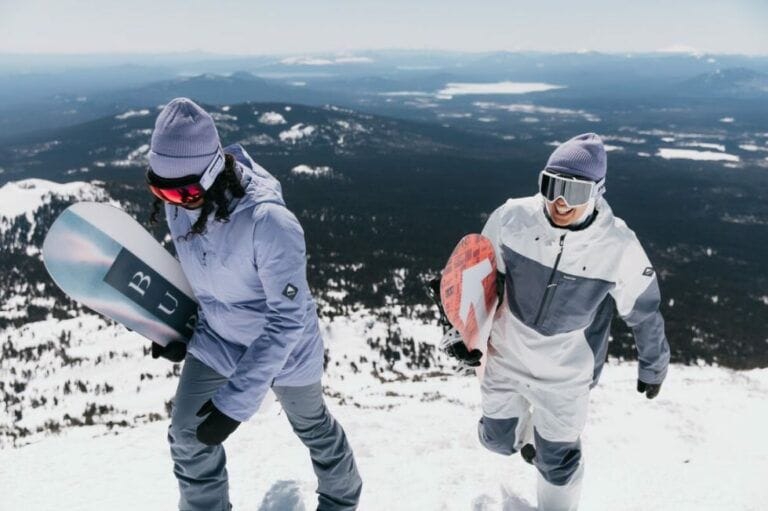
Buying Guide:
HOW TO CHOOSE THE BEST SKI GOGGLES
Still looking for the best all-condition ski goggles? Choose a pair that comes with two lenses, one for sunnier days and one cloudy. Look at the interchangeable lens systems closely—brands like Oakley, Electric and Smith Optics let you change quickly.
If you go for a high-end, single-lens pair, make sure they are removable and invest in different tinted lenses.
1. What colour of lens should you choose?
Sunny days
Darker tints like bronze, grey and purple are all earmarked for sunny days. These lenses will filter light and offer a comfortable, clear vision.
Cloudy days
Blue and orange lenses will do the trick., a compromise between bronze for days and yellows at night. They brighten things up and don’t over-contrast obstacles and shadows.
Snowfall or night
Lenses with yellows and pinks are your best friends here. Contrast and brightness pop with these on. A totally clear lens is sometimes enough at night.
2. Lens Shapes
Spherical lenses
These lenses expand your field of vision and reduce image distortion, as well as soften the glare of sun on snow. These will usually run you a little more but are without question the best on the market.
Cylindrical lenses
These lenses are curved horizontally from right to left, but vertically are flat. These are great for more casual or entry-level ski goggles. They don’t deflect as much sunlight shining off the snow and don’t have quite the same visual field as spherical lenses, but are great starters.
3. Helmet compatibility
Most goggle brands also make helmets., making it simple to find perfectly compatible pairings. Always try new goggles with your helmet on. There shouldn’t be a space between the top of the goggle frame and the bottom of the helmet’s front lip. The helmet should rest lightly on the top of the frame, but if it is heavy against the goggles, it might cause the goggles to slide down.
If there is a fit issue, Altitude Sports’ excellent return policy makes it simple to exchange or return the wrong fit.
4. Ski Goggle Size
If the goggles only reach the corner of your eye, they’re too small and will cut your vision. Ideally, there will be a finger’s width between the corner of your eye and the edge of the goggles. That said, everyone’s face shape is slightly different, and one pair might not shape to another’s contours. Generally, if your helmet is smaller, your goggles should be too. Oversized goggles will slide down your face.
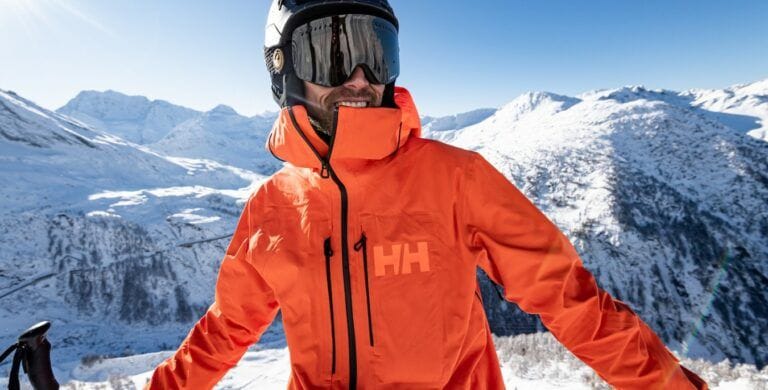
ski goggles faq
Q: Are polarised lenses worth it?
A: Better clarity of vision; more intense contrasts; reduced glare—in a word, yes! Go polarised if hesitating to choose between lenses. Your eyes tire less and you stay out longer on the runs.
Q: What are photochromic lenses?
A: These lenses are increasingly popular, adapting to light conditions outside by changing the tint accordingly. Brighter light and they darken to offer glare protection. In lower light, they clear up. They adjust automatically but can take a few minutes before finalising adjustments to different light.
Q: How do I avoid foggy goggles?
A: Most lenses today are anti-fog treated, but proper care for your goggles will determine the effectiveness of the treatment. Don't block airflow with your toque or helmet, and don't wipe the inside of your goggles. But for more details, read all about it here.
Q: Can I wear prescription glasses under ski goggles?
A: OTG (Over The Glasses) is your key! Find one of these pairs of goggles, built to slide comfortably over your prescription glasses. Contacts are tough for long days out on the mountain as they can get dry. Go with OTGs for more fun outdoors.
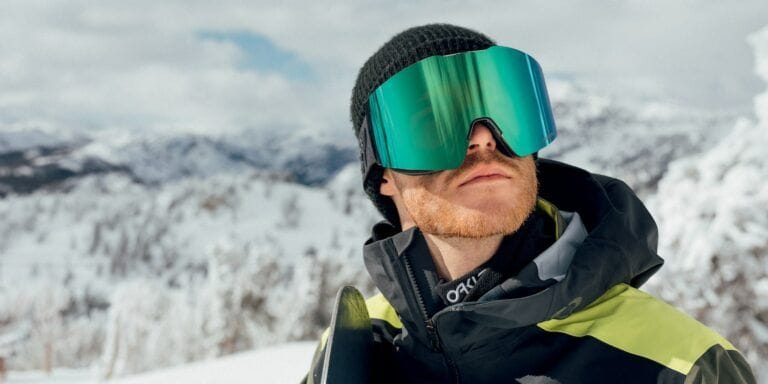
Nowadays, most ski goggle models have anti-fog treatments, anti-scratch protection, venting capabilities, silicone supports and foam padding for comfort. Most brands develop their own proprietary technologies as well. Choose a pair of goggles that answers your needs. Think of the shape of your face and helmet compatibility. With all the choices out there, you should find your best ski goggles soon enough.
Next up, check out what else to wear while downhill skiing!
